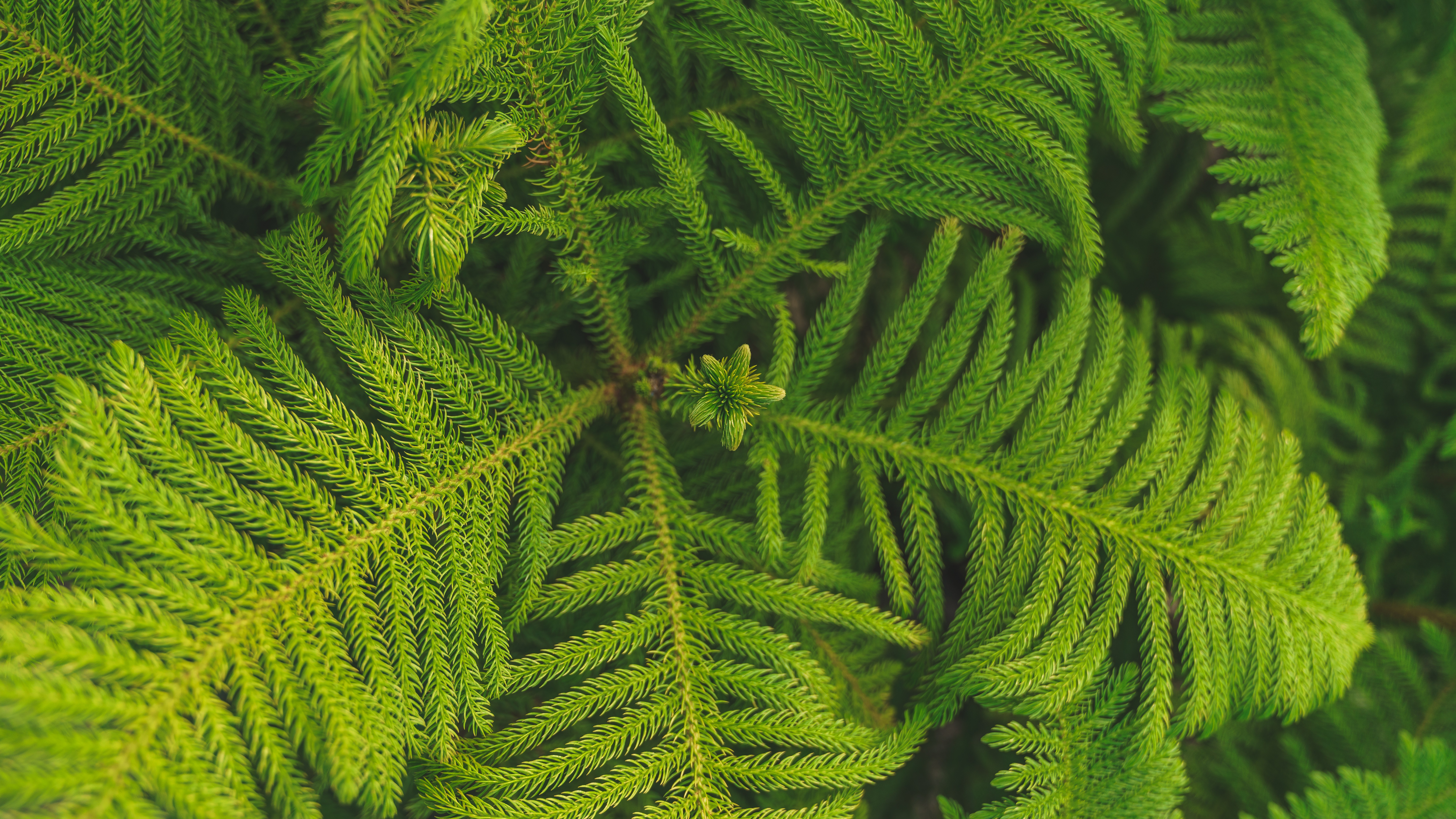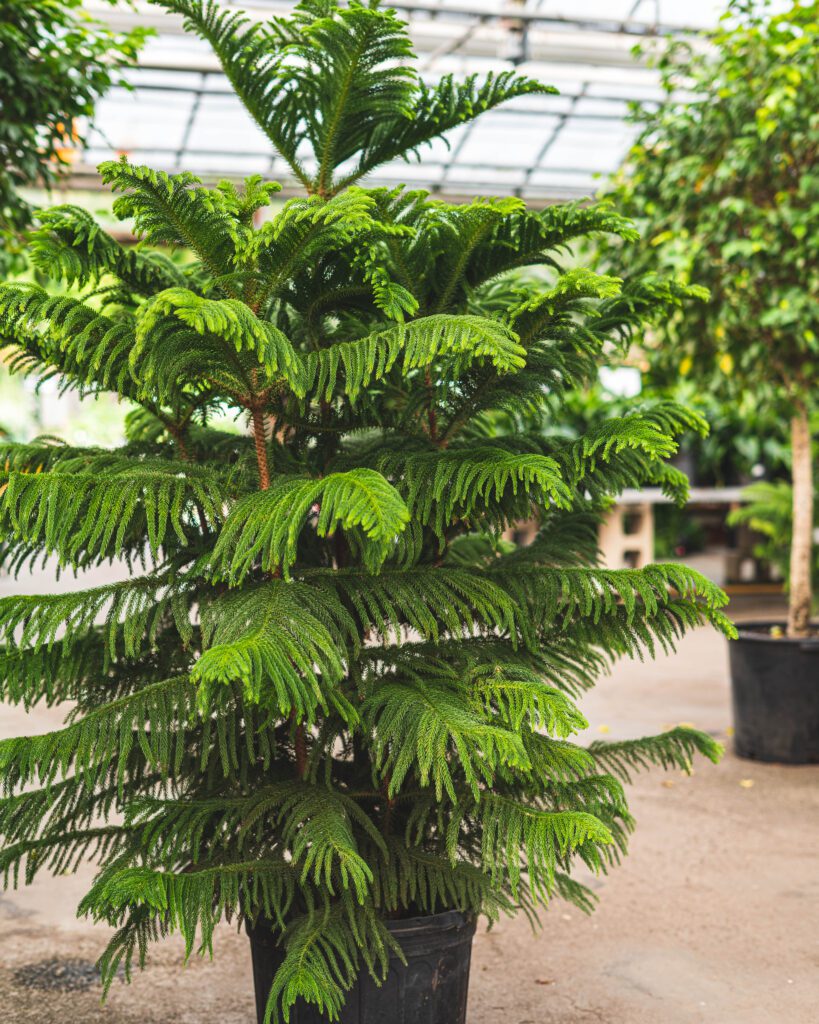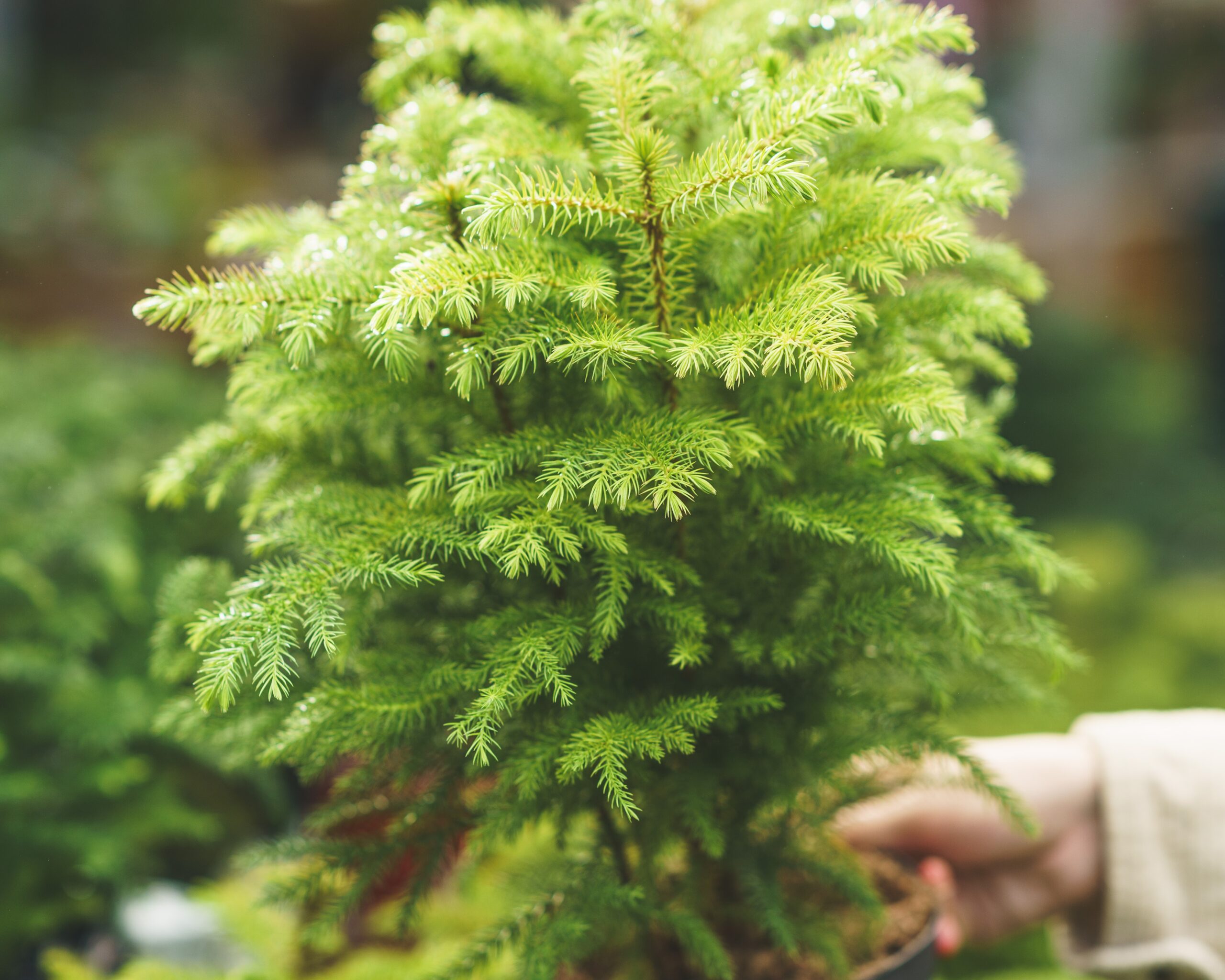November 6, 2024
Norfolk Island Pine 101: Indoor Care Tips for a Happy Tree
The Norfolk Island Pine (Araucaria heterophylla) is one of those versatile and charming plants that can easily steal the spotlight whether it’s gracing your living room or beautifying your garden. Although it’s not a true pine tree, it has a similar stately, evergreen appearance that makes it stand out. It’s often associated with Christmas because of its tree-like structure, but it’s a wonderful plant to enjoy year-round. So, if you’re wondering how to keep your Norfolk Island Pine thriving!

What’s So Special About Norfolk Island Pine?
Native to Norfolk Island in the South Pacific, this plant has a tropical vibe while still maintaining the classic “pine” look we associate with the holidays. Indoors, it makes a perfect little house tree, growing slowly and staying manageable. Outdoors in the right climate (that’s way down south in zones 10 and 11), it can become a tall and impressive specimen tree!
Fun fact: In its natural habitat, it can grow over 200 feet tall! But don’t worry—indoors it grows much more slowly, topping out around 6 feet if given the space.
Now, let’s break down how to care for this beauty!
Light: Bright, But Indirect
Norfolk Island Pines love bright, indirect light. Place your plant near a sunny window, but make sure it doesn’t sit in the direct sun all day. Too much sunlight can cause the needles to brown, while too little light can make the plant grow leggy (stretched out) as it searches for the sun. If you don’t have a spot with enough natural light, a grow light can help give it a boost.
Tip: Rotate your plant every few weeks so it grows evenly and doesn’t lean toward the light source.
Watering: Just Right
The Norfolk Island Pine prefers soil that’s moist but not waterlogged. The trick is to water when the top 1-2 inches of soil are dry to the touch. Water thoroughly, letting the excess drain out of the pot’s bottom, and then wait until the soil dries out before watering again. Too much water can lead to root rot, while too little can make the needles turn brown and crispy.
During winter months, when the plant isn’t growing as much, reduce your watering schedule. Your pine won’t need as much water during this time.
Tip: If you’re unsure, it’s better to err on the side of slightly dry rather than overwatered. They’re more tolerant of drought than soggy soil.
 Humidity: Keep It Moist
Humidity: Keep It Moist
Being from a tropical island, Norfolk Island Pines thrive in humid environments. If the air in your home is too dry (especially in the winter when the heat is on), the tips of the branches might start to brown. To keep the air around your plant humid, you can:
- Use a humidifier near the plant.
- Place a humidity tray (a shallow dish filled with water and pebbles) under the pot.
Norfolk Island Pines will appreciate the extra humidity and reward you with lush, green branches.
Temperature: Cozy and Stable
Your Norfolk Island Pine prefers normal room temperatures between 65°F and 75°F. Avoid cold drafts from doors or windows, and keep the plant away from heat sources like radiators or vents that could dry it out. Sudden temperature changes or extremes can stress the plant, so aim to keep its environment steady and comfortable.
Fertilizing: Feed It During the Growing Season
In spring and summer, you can give your Norfolk Island Pine a little boost by fertilizing it. Use a balanced, water-soluble fertilizer (like a Espoma Organics Indoor) once a month to encourage healthy growth. In the fall and winter, the plant’s growth slows down, so you can stop fertilizing until the next spring.
Repotting: Only When Necessary
Norfolk Island Pines grow slowly indoors, so you won’t need to repot often—probably only every 3-4 years. When you do, choose a pot that’s just one size larger (approximately 2 inches bigger in diameter) than the current one and use a well-draining potting mix. A good mix for this plant would be something with a combination of regular potting soil, sand, and perlite for drainage.
Common Indoor Problems and Solutions of Norfolk Island Pine
Even with the best care, you might encounter a few issues with your Norfolk Island Pine. Here’s how to handle the most common problems:
- Browning Tips: If you notice the needle tips turning brown, it’s often due to low humidity or underwatering. Increase humidity around the plant or adjust your watering schedule.
- Yellowing or Drooping Branches: This can be a sign of overwatering. Check the soil and make sure it’s not soggy. Allow it to dry out before watering again.
- Leggy Growth: If your plant starts looking stretched out with long spaces between branches, it’s not getting enough light. Move it to a brighter spot or supplement with a grow light.
The Norfolk Island Pine is a wonderful indoor companion, bringing an air of grace and calm to any room. With the right balance of light, water, and humidity, it will thrive and stay green year-round. It’s slow-growing, so you won’t need to worry about it outgrowing your space anytime soon—just enjoy its beauty and tropical charm!
Visit any of our 7 locations this holiday season and pick one up for yourself and may your Norfolk Island Pine bring a bit of island magic to your home! ?

